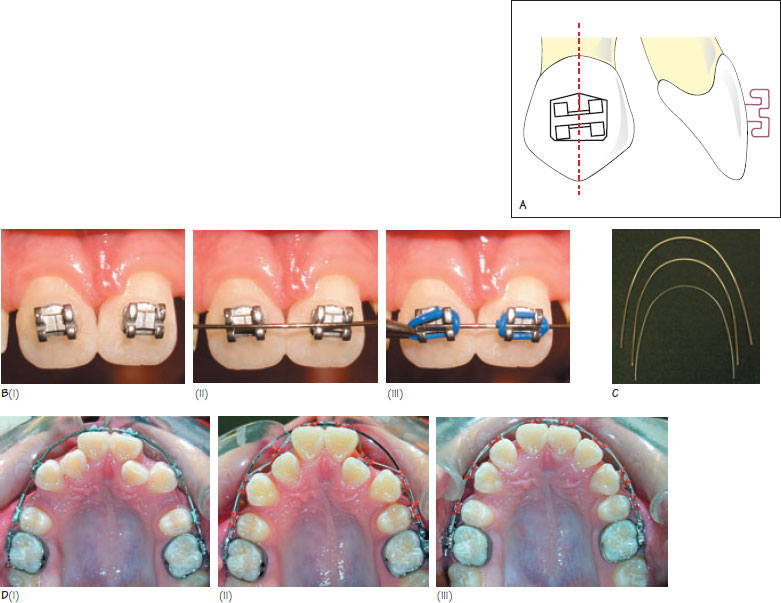40
Fixed appliances
Table 40.1 The relative advantages and disadvantages of fixed and removable appliances.
| Fixed appliances | Removable appliances |
| Precise three dimensional control of tooth movement | Less precise control of tooth movement |
| Bodily tooth movement | Tipping movement |
| Complex malocclusions | Simple malocclusions |
| High anchorage requirements | Smaller anchorage requirements |
| Controlled space closure possible | Controlled space closure difficult |
| Multiple tooth movements | Fewer tooth movements |
| Can be used in the upper and lower arches | Retention poor in the lower arch |
| Simple to correct rotations | More difficult to correct rotations |
| Oral hygiene can be problematic | Removable for oral hygiene |
| Not dependent on compliance for wear | Dependent on compliance for wear |
| Long chairside time | Short chairside time |
| Require extensive training to manage | Require less training to manage |
Figure 40.1 (A) The mesiodistal tip and inclination of the bracket slot contributes to determining the final tooth position. The bracket should be positioned so that it is parallel to the long axis, and in the midpoint of the crown in order to express the correct built-in value. (B) Fixed orthodontic appliances: (i) brackets are placed on the tooth surface, (ii) An archwire is inserted into the bracket slot and (iii) ligated with an elastomeric module. (C) Archwires are made from a variety of materials, come in different sizes and can have a round or rectangular cross-section. The wire is formed into a particular archform and will place active forces onto the teeth to move them into this archform. (D) Space opening mechanics to create space for the in-standing maxillary lateral incisors, (i) Nickel titanium coil spring used to open the lateral incisor spaces by distal movement of the canines; (ii) once adequate space has been created, a flexible archwire is used to align the teeth; (iii) at the end of alignment.

The majority of orthodontic treatment is undertaken with the use of fixed appliances. These have a number of advantages as compared to removable appliance techniques (Table 40.1). There are many fixed appliance systems with the most commonly used being the ‘preadjusted’ edgewise appliance. This appliance was developed from the standard edgewise appliance that was originally introduced by Edward Angle. The pre-adjusted Edgewise appliance benefits by each tooth having its own individual bracket, with the slot at a specific angle and a base of varying thickness, which positions the tooth at its correct tip/inclination/rotation once a full size archwire has been allowed to fully/>
Stay updated, free dental videos. Join our Telegram channel

VIDEdental - Online dental courses


